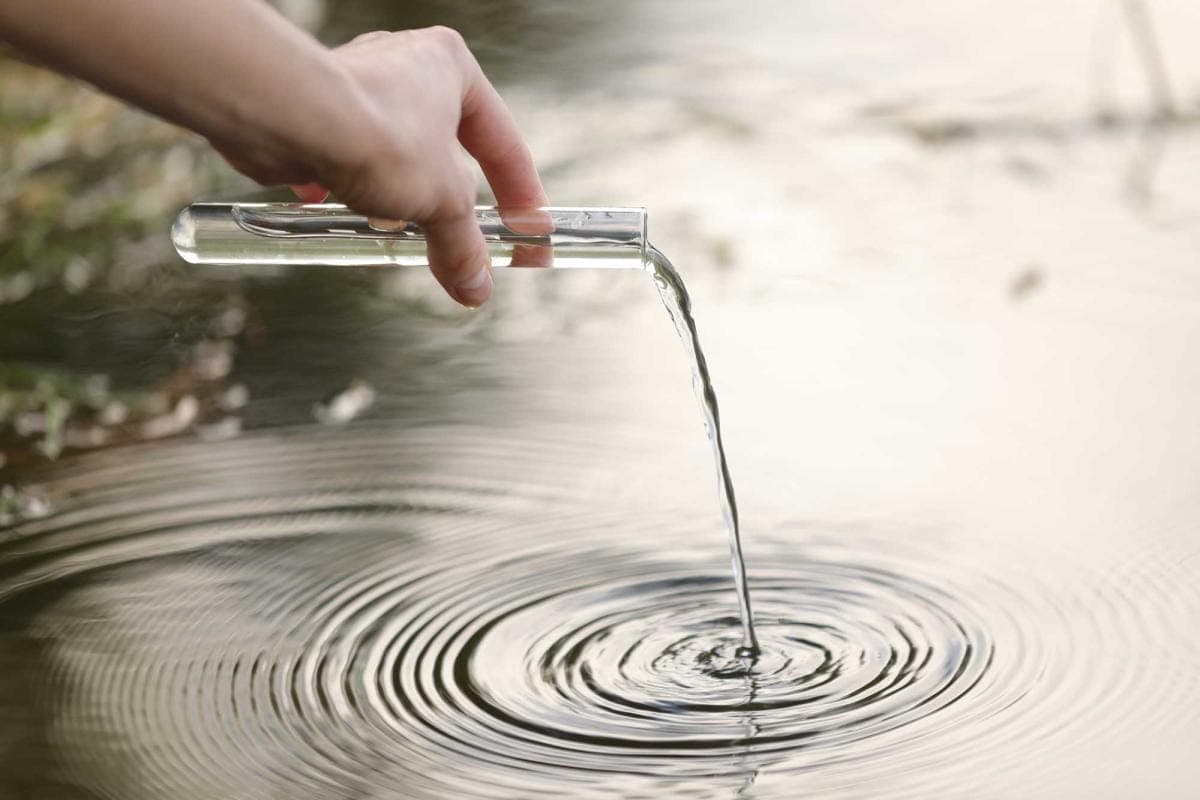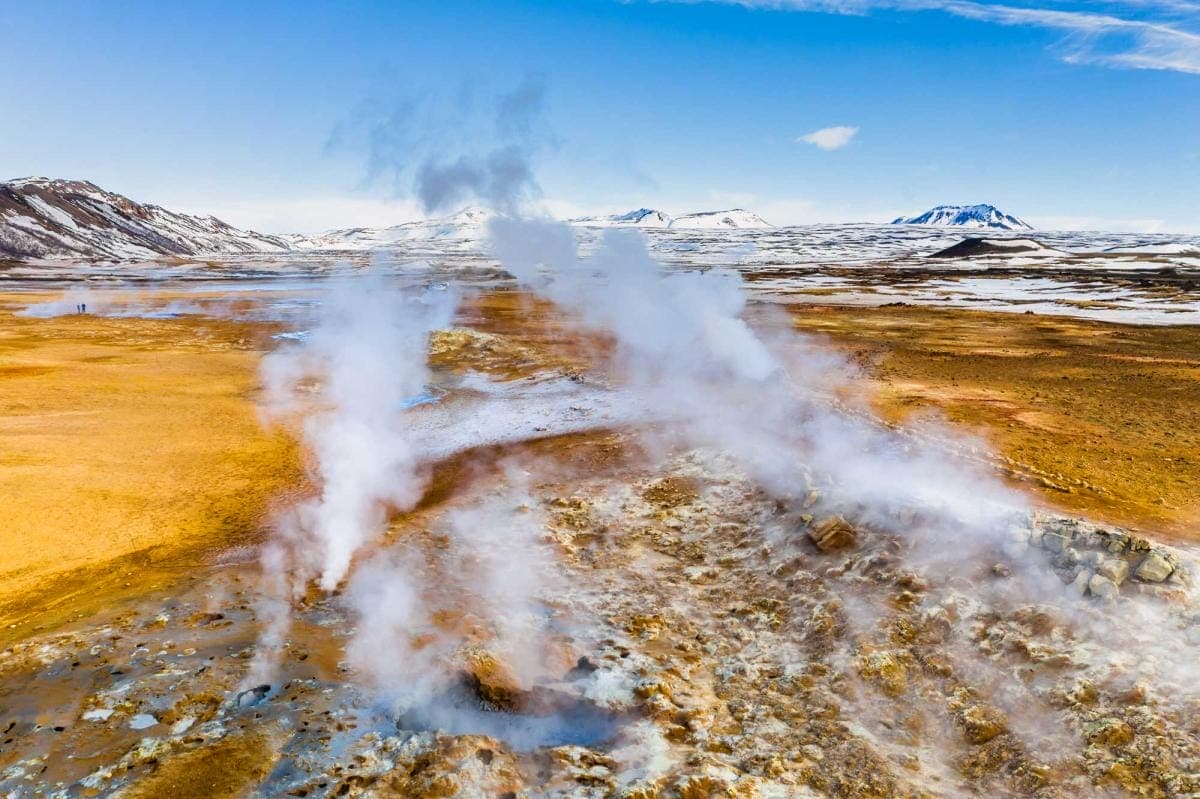Beauty, Skincare, Trends & Opinions, Wellness
Why Geothermal Mineral Water Deserves a Spot in Your Skincare Routine
If you’ve ever soaked in a natural hot spring and felt like your skin was reborn, you already understand the quiet power of geothermal mineral water. It’s not just the soothing warmth or the breathtaking scenery – it’s the unique mineral composition infused by the Earth itself. That mineral-rich steam or spring water isn’t just a spa-day novelty. It’s a centuries-old secret, now reimagined in modern skincare.
From thermal springs in the French Pyrenees to Iceland’s volcanic pools, cultures around the world have tapped into geothermal water for both therapeutic and cosmetic benefits. Today, dermatologists and formulators are bottling this ancient remedy for everything from soothing inflammation to protecting the skin barrier. Let’s explore what makes geothermal mineral water so special – and why your skin might be craving it.
What Exactly Is Geothermal Mineral Water?
Geothermal mineral water comes from underground sources that are naturally heated by the Earth’s geothermal activity. Unlike regular tap water or purified water used in standard skincare products, this water is enriched as it moves through layers of volcanic rock and mineral-rich soil. Along the way, it picks up trace elements like calcium, magnesium, potassium, silica, selenium, zinc, and sulfur – each with its own set of skin-loving properties.
The water is usually sterile, naturally filtered, and often boasts a neutral to slightly alkaline pH, making it gentle on the skin. It’s this combination of heat, purity, and mineral content that gives geothermal water its therapeutic edge.
Why Your Skin Responds to Minerals
Your skin doesn’t just benefit from hydration. It thrives on essential nutrients – and minerals are foundational to cellular function, barrier repair, and inflammation control. For example:
- Calcium helps regulate cell turnover and strengthens the skin barrier.
- Magnesium plays a role in reducing inflammation and improving elasticity.
- Selenium has antioxidant properties that fight free radicals.
- Silica supports collagen production and helps smooth the skin.
- Zinc and sulfur help with acne, oil control, and skin healing.
Together, these elements can soothe irritation, calm sensitivity, and even aid in wound healing. This makes geothermal water particularly beneficial for those with conditions like eczema, rosacea, acne, or simply reactive skin.
Healing for Sensitive Skin
One of the most studied and beloved uses of geothermal mineral water is its effect on sensitive skin. Research from thermal dermatology centers in France shows that regular use of thermal spring water can reduce itching, redness, and stinging in people with eczema or atopic dermatitis. Brands like Avène and La Roche-Posay, which base their lines on French thermal spring waters, have published clinical data supporting these claims.
A study published in the Journal of Drugs in Dermatology found that mineral-rich thermal water improved hydration and reduced transepidermal water loss (TEWL), a key marker of skin barrier function. It also helped regulate inflammatory markers in patients with compromised skin, such as those undergoing chemotherapy or radiation.
Unlike some active ingredients that can trigger stinging or peeling, geothermal water is inherently non-irritating. In fact, it’s often one of the few things reactive skin types can tolerate during a flare-up. That makes it a game changer for people with chronic skin sensitivities who struggle to find products that don’t cause more harm than good.

A Natural Source of Antioxidants
Not all minerals are created equal. Some geothermal waters are rich in selenium – a trace element with powerful antioxidant properties. Antioxidants are essential in defending your skin against oxidative stress caused by pollution, UV rays, and internal metabolic processes.
Oxidative stress accelerates aging and contributes to a breakdown in collagen, leading to wrinkles and sagging. Using antioxidant-rich geothermal water topically can add another layer of protection to your daily routine, especially when paired with a high-quality SPF.
And while it’s not a substitute for ingredients like vitamin C or retinol, geothermal water can enhance their benefits. It helps soothe potential irritation from stronger actives and creates a balanced environment for your skin to recover and rebuild.
Post-Procedure Skin Recovery
If you’ve ever had a chemical peel, microneedling, or laser treatment, you know that your skin can feel raw, tight, and inflamed for days afterward. Dermatologists often recommend thermal spring mists or compresses to help patients cool down post-treatment.
Geothermal mineral water helps speed up recovery by reducing inflammation, minimizing itching, and replenishing lost moisture. It’s gentle enough to use even when your skin barrier is temporarily compromised. That’s one reason why many post-procedure kits from aesthetic clinics include a thermal mist or serum as part of their healing protocol.
Balancing and Strengthening the Skin Microbiome
The skin microbiome – our natural layer of protective microbes – is crucial for maintaining healthy skin. When it’s out of balance, you might experience acne, rosacea, sensitivity, or chronic dryness. Interestingly, geothermal mineral water appears to support a healthy skin microbiome by creating a balanced pH and introducing trace minerals that beneficial microbes love.
Some research even suggests that the diversity of minerals in geothermal water could help discourage the overgrowth of pathogenic bacteria, such as Cutibacterium acnes, without the harshness of traditional antibacterial agents. This makes geothermal water especially helpful for acne-prone skin that’s sensitive to benzoyl peroxide or salicylic acid.
A Lightweight Hydration Boost
Geothermal water is often used in face mists, toners, serums, and creams as a way to instantly refresh the skin. Unlike heavy creams that may clog pores, geothermal water provides hydration in its lightest form. When misted onto clean skin, it delivers minerals and moisture without any added oils or synthetic additives.
You can also layer it underneath your moisturizer to lock in hydration. The idea is to use it as your first skincare step – almost like a primer for the rest of your routine. It preps your skin by making it more receptive to serums and creams that follow.

Environmental Benefits and Sustainability
Some geothermal skincare companies are focused not just on the water’s properties but on how it’s sourced. Because geothermal energy is renewable, many brands are finding ways to extract mineral water in a way that’s sustainable and low impact.
Iceland, for instance, uses geothermal heat to power nearly 90% of its homes and industries. Skincare brands that tap into Icelandic hot springs often source their water without harming the environment, thanks to advanced filtering and closed-loop systems. Supporting these brands means investing in both your skin and the planet.
Brands That Champion Geothermal Mineral Water
Several skincare lines have built their entire identity around geothermal or thermal spring water:
- Avène uses spring water sourced from the Cévennes Mountains in France, clinically shown to reduce skin reactivity.
- La Roche-Posay incorporates selenium-rich water from its namesake village in France, recommended by thousands of dermatologists.
- Blue Lagoon Iceland harnesses silica- and algae-rich geothermal water from volcanic springs, focusing on anti-aging and barrier support.
- Uriage taps into water that surfaces at 82°F, rich in calcium and magnesium for calming irritated skin.
These aren’t just marketing gimmicks. Many of these waters are studied and tested for their effects on real skin conditions, setting them apart from regular purified water used in generic formulas.
How to Incorporate Geothermal Water into Your Routine
If you’re curious about trying geothermal water, the easiest entry point is a mist. Spritz it on your face after cleansing or use it to rehydrate throughout the day, especially in dry climates or while traveling.
You can also find mineral-infused serums, essences, and moisturizers that deliver longer-lasting hydration. Look for products where geothermal or thermal water is one of the top ingredients – not buried at the bottom of the list.
Some people even use thermal water compresses: soak a few cotton pads with the water and apply to inflamed areas for 10–15 minutes. It’s a simple way to calm down redness, itchiness, or a sunburn.
FAQs About Geothermal Mineral Water in Skincare
Is geothermal water the same as mineral water you drink?
Not exactly. While both contain minerals, geothermal water is usually heated underground and often has a higher mineral content. It’s specifically tested and used for topical application, not drinking.
Can geothermal water help with acne?
Yes, especially if your acne is linked to inflammation or an impaired skin barrier. Minerals like zinc and sulfur can help regulate oil and calm breakouts without irritating the skin.
Is it safe for kids or people with eczema?
Many dermatologists recommend geothermal sprays for kids with eczema or sensitive skin. Just check for products without added fragrance or preservatives.
Do I still need a moisturizer if I use geothermal mist?
Absolutely. While geothermal water hydrates, it doesn’t seal in moisture. Always follow it with a good moisturizer to prevent evaporation.
Is geothermal water just a trend?
Not at all. Cultures have used mineral-rich spring water for centuries. The current buzz simply reflects a return to natural, science-backed skincare.
Where can I find geothermal skincare products?
Try brands like Avène, La Roche-Posay, Vichy, Uriage, Blue Lagoon, or even smaller boutique lines from Iceland or Japan that specialize in mineral skincare.
How long does it take to see results?
You might notice immediate relief from redness or tightness. Long-term improvements in hydration and barrier function can take a few weeks of consistent use.




